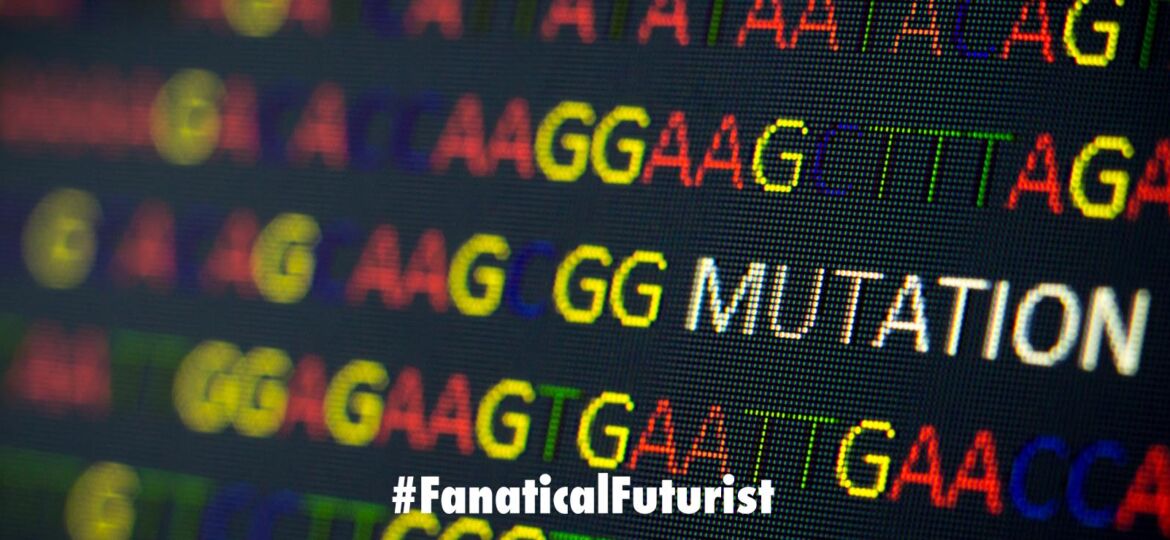
WHY THIS MATTERS IN BRIEF
The ability to quickly and cheaply analyse patients DNA and genomes for disease will save lives and help doctors treat patients faster.
 Love the Exponential Future? Join our XPotential Community, future proof yourself with courses from XPotential University, read about exponential tech and trends, connect, watch a keynote, or browse my blog.
Love the Exponential Future? Join our XPotential Community, future proof yourself with courses from XPotential University, read about exponential tech and trends, connect, watch a keynote, or browse my blog.
In the past if you had a genome or DNA strand you wanted to sequence, for example to identify a disease or to find out more about an organism, you’d have had to spend millions of dollars and it would have taken you months or even years to do.
Now though thanks to various breakthroughs in genetic sequencing technology like this one at Stanford University that cost’s nearing $100 to $1,000 and it can be done in a matter of hours. And to say that these breakthroughs will revolutionise the world of personalised medicine is a massive understatement.
In the latest experiment a team of scientists at Stanford Medicine set out to sequence the genomes of twelve patients, five of whom received a genetic diagnosis from the sequencing information in the amount of time most people spend at work.
The researchers noted that not all ailments are genetically based, which is likely why some of the patients didn’t get a diagnosis after their sequencing information was returned.
In one of the cases scientists took on, it took only five hours and two minutes to sequence a patient’s genome, setting the first Guinness World Records title for fastest DNA sequencing technique – normally, clinicians consider results that come within a few weeks as rapid.
“It was just one of those amazing moments where the right people suddenly came together to achieve something amazing. It really felt like we were approaching a new frontier,” said Euan Ashley, professor of medicine, genetics and biomedical data science at Stanford, in a press release.
Out of the 12 patients, Stanford scientists completed genome sequencing in an average of eight hours. The team also achieved a diagnostic rate of roughly 42 percent, which is about 12 percent higher than the average for diagnosing mystery diseases.
Genome sequencing allows scientists to see a patient’s complete DNA makeup and contains critical information ranging from a person’s eye color to inherited diseases. It’s a process vital to diagnosing patients with diseases rooted in their DNA, because once a doctor knows the specific genetic mutation, they can tailor just the right treatment plan.
The faster scientists can sequence a patient’s genome, the faster the patient can leave critical care units, require fewer tests, recover more quickly and spend less money on costly care.
The sequencing team at Stanford used a special machine built by Oxford Nanopore Technologies, whose miniature MinION sequencing tool is used to sequence the DNA of astronauts on the International Space Station (ISS).
In this case the machine the researchers used was composed of 48 sequencing units, also known as flow cells. That allowed scientists to sequence one person’s genome using all flow cells simultaneously, which turned out to be such a massive success that actually overwhelmed the lab’s computational systems.
Stanford graduate student Sneha Goenka found a quick solution that involved taking the data compiled right into a cloud-based storage system. From there, computational power could be amplified and sift through data in real-time, algorithms worked independently to scan incoming genetic code for errors that might cause disease.
The final step required scientists to compare a patient’s gene variants against publicly documented variants known to cause disease, which they did using Artificial Intelligence (AI), and amazingly the team say they think the genome sequencing time can be crunched down even further.
“I think we can halve it again. If we’re able to do that, we’re talking about being able to get an answer before the end of a hospital ward round. That’s a dramatic jump [in capability],” said Ashley.
Stanford scientists plan to offer a sub-10-hour turnaround to patients in intensive care units at Stanford Hospital and Lucile Packard Children’s Hospital Stanford, and eventually spread to other hospitals.
















